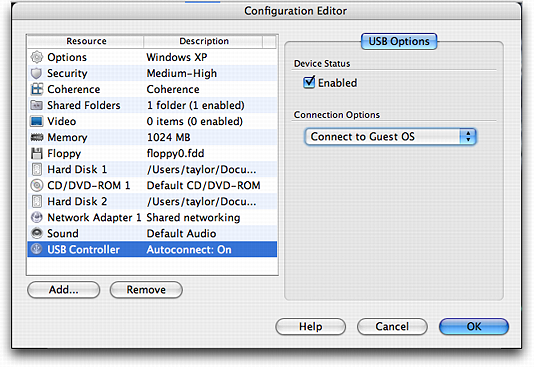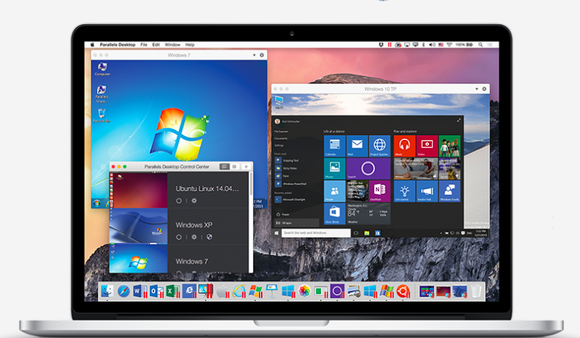Virtual PC is dead - long live VMware and Parallels! Discussion in 'UK Macs' started by Jaimie Vandenbergh, Aug 8, 2006. Jaimie Vandenbergh Guest. They didn't buy Virtual PC for the Mac version, they bought it to try and catch up with VMWare via the Windows version. For the needs described in the article, I'd probably go with VMware Fusion.It does a really nice job of bringing Mac and Windows together, especially with the 'Unity View' feature.(Granted, I haven't tried Parallels or VirtualBox, but I have the impression they're not quite as good in this.).

Boot Camp is the easy way to run Windows on a Mac, but it has one major drawback: it requires you to reboot. And that can be a rather big disruption of your work, depending on how much time you spend in either Mac OS X or Windows.
Virtualization software like Parallels Desktop 7 avoids this glaring issue altogether, as it lets you run a full copy of Windows from within Mac OS X. But is it actually the best of both worlds or just a bag of compromises?
[ VDI shoot-out: VMware View 5 and Citrix XenDesktop 5.5 ]
Virtualization for serious work?
In part 1 of my Running Windows on a Mac series, I made it very clear that virtualization solutions such as Parallels or VMware Fusion are merely a compromise for anyone who needs to get serious work done or has to spend several hours in full-screen Windows.
And I didn't just base that on my past experience with virtualization, but also one some benchmarks Ed Bott performed this summer.
It was only a couple of days after that article went live that Parallels came out with version 7 of their 'Parallels Desktop'. And they didn't exactly play small: Parallels promised not just the full-blown Lion support (Launchpad, full screen mode, Mission Control) and the ability to run Mac OS X Lion as a guest machine. They also made a big promise of running Windows 'without compromising performance'. The company also claims that Parallels Desktop 7 runs 45% faster using Windows 7 and 60% faster on 3D-accelerated applications (games, rendering, etc.) than before. These claims, coupled with enhanced support for USB, networking and sound cards (7.1 surround sound in a virtual machine), made me curious.
Can I run my Windows applications under Lion on Parallels Desktop 7 with no compromise? Can I run it all day?
For this shootout, I took the plunge and used Parallels Desktop 7 for over four weeks. After having some severe performance issues with running Windows 8 Developer Preview under Parallels, I decided to use Windows 7 Ultimate SP1 under Mac OS X Lion for my test. Here's what I found:
Pricing and installation

Boot Camp is free and pre-installed on every Mac (post 2006). Parallels, on the other hand, charges you $79.99 ($49.99 for upgrade) for its Mac virtualization product. In both cases, that also excludes the price of a Windows 7 license, which you'll need! So, if you're adding Windows 7 Home Premium to the mix, think at least $99 (for the system builder DVD) of additional charges for the privilege of running Windows on your Mac.
Boot Camp doesn't support Windows XP or Vista, so if you're going the Boot Camp route on OS X Lion, you're basically stuck with Windows 7. I can imagine this being a deal breaker for some companies.
Parallels Desktop 7, however, fully supports Windows XP, Vista and Windows 7. And it doesn't stop there. Parallels supports Chrome OS, Linux and even the Windows 8 Developer Preview, which makes it a full-blown virtual PC solution and not just a way of running Windows on your Mac. In fact, a built-in downloader allows you to grab the respective ISOs and install them automatically. I think that's quite a killer feature for IT pros: Getting all of these OSes to run on a Mac is torture, so in terms of OS support and pure simplicity, Parallels just blows Boot Camp away. Period.
The Windows 7 installation procedure is fairly straightforward in both Boot Camp and Parallels Desktop 7. You insert the DVD or the ISO, perform some initial configuration and run the Windows installer. However, I went a slightly different route. I actually used Parallels to virtualize my Boot Camp partition. Yes, Parallels Desktop 7 allows you to select your pre-existing Windows 7 partition on your Mac and just run it as it if were an actual virtual machine. This is actually the only way to compare performance of Boot Camp versus Parallels, since I'm testing both solutions on the exact same configuration with the exact same number of programs installed and identical settings. Neat.
VMware versus Parallels, which is the fastest Windows virtualization for Mac OS X, using graphics software?
Macintosh-based graphic designers often have to delve into Microsoft Windows for many reasons. And with Intel-based Macs there are many easy ways to do this.
Rather than buying a separate PC, designers now have the option of installing Windows XP or Vista directly onto their Macs, utilizing a tool from Apple called Boot Camp.
Although this is the fastest way to run Windows on a Mac (it runs it at the same speed as an equivalent PC), it requires booting up the computer separately. This is where virtual software such as Parallels and VMware Fusion come in handy.
Running Windows software on a Mac using virtualization tools is not as fast as Boot Camp, but it allows designers to keep working in OS X, whilst running different versions of Windows at the same time. It even allows users to share documents and to drag and drop files between the Mac and the virtual PC environment.
But how useful are these emulation tools for designers using graphics applications like Adobe Photoshop, InDesign, Illustrator, Acrobat or QuarkXpress? What is the performance of software like Photoshop under virtual Windows? Are there any speed test benchmarks?
How fast is Adobe Photoshop under Parallels or VMware for OS X?
Well the quick answer is that one wouldn't advise running Photoshop under Parallels or VMware by preference. Or most resource intensive applications for that matter. But perhaps you only have a Windows version of one of these tools? Or maybe a client has supplied a document in a PC version of InDesign or Quark, with PC fonts, and you want to open it within the same environment without having to keep rebooting, or wandering into another office to use their PC? Or maybe you just want to quickly check that an Acrobat PDF looks the same under Windows, as it does on the Mac version?
Which is faster, VMware or Parallels?

Not as easy a question to answer as you might think. When comparing Parallels versus VMware Fusion, there are many parameters to look into. Of course, we are not concerned with a complete product evaluation. To keep in mind the graphic arts nature of this site, we we devised a few performance tests that were predominantly aimed at graphic arts software applications. The aim was to find out is Parallels faster than VMware, or visa versa, when using design software?
Windows Vista and Windows XP on Parallels and VMware Fusion
An important factor to take into account is the choice of Windows installation. We chose to run Photoshop and InDesign on Windows Vista Business Edition under both VMWare and Parallels. Whilst it might be true that the test results may have been somewhat faster overall under Windows XP, we wanted to test the performance under Microsoft's latest operating system.
It is also possible that either VMWare Fusion or Parallels may have excelled had we used Windows XP as the testing platform. And of course as updates are released, performance issues can often change. For the record we used VMware Fusion Version 1.0 (51348) and Parallels Desktop 3.0 Build 5160.0.
Parallels Desktop 11 For Mac
Testing conditions
The tests were carried out on a MacBook Pro 2.33 GHz Intel Core 2 Duo, with 3GB of RAM, running Mac OS X 10.4.10. Both VMWare Fusion and Parallels were given 1024 MB of RAM. We know that this is low for Windows Vista (and indeed Photoshop), but we wanted to recreate to some degree the conditions that designers might be under when running these applications in a virtual environment. Clearly any use of Photoshop or InDesign in a virtual environment would be a stop-gap, alongside other applications, rather than a permanent solution. Otherwise the installations remained as default. VMWare Fusion does have the ability to run in dual processor mode, but the results for our tests produced so negligible a difference, to the point that it was not even worth publishing the results. The Macintosh and each virtual machine were rebooted between tests and only one software application was run at any one time. The Adobe applications we used were from the Creative Suite 3 (CS3) bundles.
Virtual Pc For Mac Download
Finally
Virtual Pc For Mac Vs Parallels
Virtualization is a complex technology and software tasks may function differently under different test scenarios, other Macintosh computers, versions of OS X and memory configurations. As such, we wouldn't advise basing a buying decision on these test results alone. Your mileage may vary and these speed tests should be taken as no more than an experimental guideline. Demo versions of both Parallels and VMware are currently available and it may be advisable to try each product out on your own system before committing to one or the other.